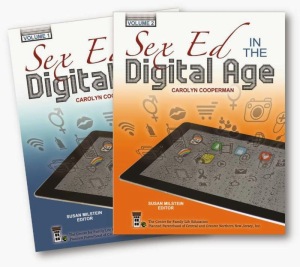 Following up on yesterday’s post on parenting in the digital age, today’s lesson plan also comes from Sex Ed in the Digital Age. It takes yesterday’s topic and builds on it, engaging parents (and professionals) on a deeper level of analysis of adolescent developmental needs. I love this focus on adolescent needs and how, when, and where technology can meet them – and how parents and other adults can support that process!
Following up on yesterday’s post on parenting in the digital age, today’s lesson plan also comes from Sex Ed in the Digital Age. It takes yesterday’s topic and builds on it, engaging parents (and professionals) on a deeper level of analysis of adolescent developmental needs. I love this focus on adolescent needs and how, when, and where technology can meet them – and how parents and other adults can support that process!
HELPING TEENS ACT PURPOSEFULLY IN A DIGITAL WORLD:
A Lesson for Parents and Professionals
By Lee Heerten
Objectives
By the end of this lesson, participants will be able to:
- Recognize the psychological and social needs being fulfilled through youth’s digital interactions.
- Formulate ways to facilitate healthier digital interactions to fulfill youth’s needs.
Rationale
Parents and youth-serving professionals are inundated with media reports of youth behaving badly online – stories of cyberstalking, sexting and cyberbullying can lead many caring adults to wish that youth would leave digital life altogether. However, as digital spaces and interactions have become seamlessly integrated into many young people’s lives, they can also be powerful sites for young people’s psychological and social needs to be fulfilled. This lesson encourages caring adults to recognize the possible motivations behind young people’s problematic digital interactions, affirm the real and complex needs of youth, and assist young people in finding healthier ways to fulfill their needs, both online and off.
This lesson takes a list of scenarios that was used in another lesson plan for youth. When these two lessons are used together, they offer the opportunity to provide both adults and youth with the same starting place. I would offer the lessons separately, to groups of parents and youth. Then I would bring the two groups together. They would then have the opportunity to talk about their reactions to the scenarios in a large group format that could provide insight for both the parents and the youth.
This format is emerging into a best practices approach for parent child communications education: parents and youth meet separately, then together. It allows for a sense of privacy that can improve openness and anonymous contributions provided by individuals in their separated groups to be read to the whole group, which can increase intergenerational understanding. It also provides for explicit skill development where families begin difficult conversations in the class environment, which may allow for them to continue it more easily at home.






